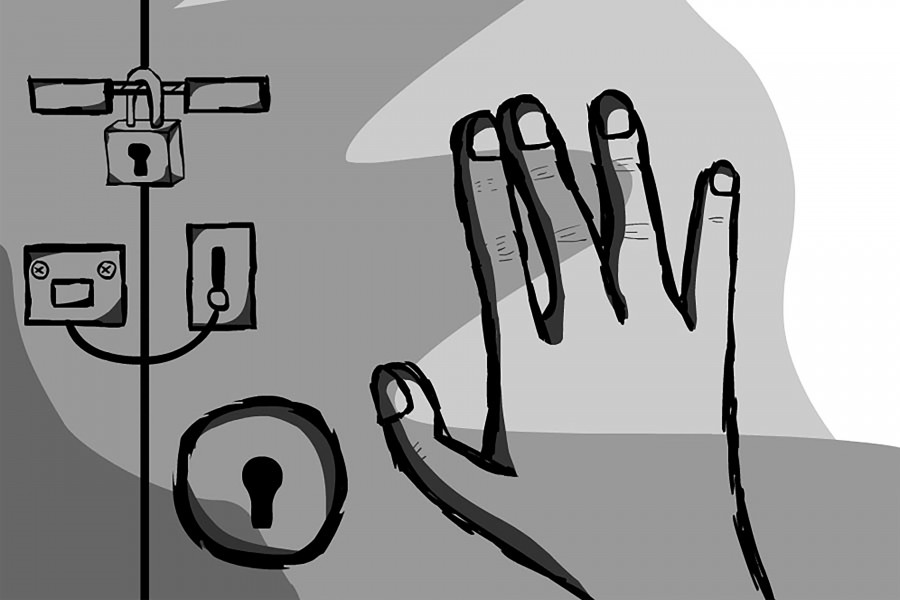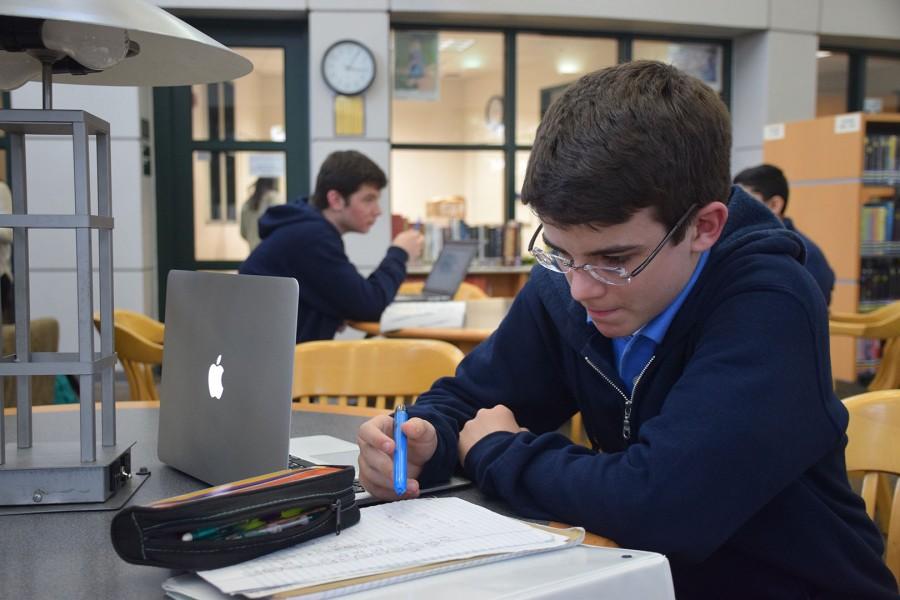Ah, the 70’s. A time when ice cream was considered a nutritious dairy snack and teenagers were encouraged to hitchhike with strangers. With the passage of four decades came an advancement (and creation) of not only some common sense, but also an increased need for safety.
Safety is the feeling of protection from danger or risk. It comes in knowing where you’re going when you’re driving late at night, in the ability to call 911 whenever you want or even in carrying around that industrial-sized bottle of pepper spray in your car.
“We don’t really sit down at the dinner table and talk about safety. It’s kinda just an underlying thing,” sophomore Alexandra Rick said.
Though we don’t talk about it, we can all agree that it’s important to feel safe, especially in the world we live in today; but our need for safety has evolved over time.
The measures we take to feel safe this decade, or even this year, are extremely different than ones that were taken in the past. For example, in the 1970’s, the threats that faced the world were different. The Cold War kept people on their toes, but it did not immediately endanger the average Joe’s daily life.
The absence of pervasive yet realistic threats combined with a youthful attitude about life resulted in a disregard for danger.
“I don’t remember any specific examples of feeling unsafe from when I was a teenager in the mid to late 80’s and early 90’s,” math teacher Mike Hill said. “I feel like if you’re in your teens and early twenties, you don’t feel like you’re in danger.”
Whereas today, one in four women experience domestic abuse in their lifetime, school shootings often find their way onto the news, and our ears are constantly bombarded with stories of civil wars, famine, terrorism and irreversible environmental changes.
These cultural changes of what is socially considered “normal” have led to a completely different approach to safety. Our awareness of a need for safety stems in large part from the attacks on the Twin Towers on 9/11.
Before 2001, people assumed their safety was ensured in situations that didn’t feel dangerous. When the victims of the attacks boarded the compromised planes, they had no way of knowing what was going to happen.
After the attacks, fear spiked federal action that implemented not only some hefty airport security, but also a mindset that considered safety a necessity. This way of thinking held the country in a tight bind for many years, but as of late we’ve begun to slip back into our old ways.
Well, not exactly the same old ways. Before 9/11, people were not always aware of how unsafe a situation could be. Now, Americans understand that danger is among us and can be found in almost everything. Despite this, we often neglect our own safety to do something that we want to do, effectively putting ourselves in dangerous situations.
To avoid danger, we turn to formal protection, like home security systems. When people invest in house alarms, they show an obvious want for safety. In 2010, the New York Times estimated that about 18 million homes have security systems in the United States.
But home alarm systems become redundant if they aren’t on. According to Safe Guard the World, a home security company, about 30 percent of all 2 million yearly burglaries in the United States occurred through an open or unlocked window or door.
The problem is a false sense of security that is provided by the system. Knowing that a house is “protected” can fill its inhabitants with a naive feeling of certain safety, allowing them to become less aware of their surroundings. Unaware enough, in fact, that they to forget to lock doors and close windows, or even to turn on their expensive, life-saving alarm system.
But this is a simple and understandable mistake. Some bad decisions that we make are completely conscious, like how we overshare on social media.
People know that if they’re in England for the next week and a half, they probably shouldn’t post that picture of themselves in front of the London Eye on the same platform that has a GPS tracker that can lead people to their home addresses. But they post anyway because they look great in the picture and want all of their friends to see.
And let’s not kid ourselves, we know there’s a chance that one of their doors or windows is unlocked, and that 30% of burglars will be able to find out which one it is.
Oversharing is something we rarely think about, but can lead to more danger than anyone realizes. But there is a huge difference between consciously making a bad decision that doesn’t have a high probability of producing bad consequences and consciously making a bad decision that puts oneself in immediate danger.
A prime example is Uber. The relaxed ride-sharing, quasi taxi service has rapidly grown in popularity over the past year.
It is used in excess by people in their teens and early twenties who are given peace of mind because the company requires background checks for all drivers. This should mean that the stranger whose hands your life is in is at least a good driver.
However, these drivers are not always good people. Who’s Driving You, a public awareness campaign for safe driving, reports 40 incidents of sexual assault, five alleged kidnappings and eight incidents where the driver was a felon in Uber cars since July of 2013. Despite laws and precautions taken by the company, safety isn’t guaranteed.
There is no possible way to be safe from everything. A good place to start increasing your safety is to become more aware of your surroundings. Remember that there is danger in almost everything, and recognize the need for a plan if something were to go wrong. By doing so, your awareness can help redefine common sense, and make it become a little more common.













